On January 28, 2013, the Academy honored Robert J. Birgeneau, Chancellor Emeritus of the University of California, Berkeley, at a special symposium on the benefit of public investment in higher education. Chancellor Birgeneau, University of Michigan President Mary Sue Coleman, and Dean of the Goldman School of Public Policy at UC Berkeley Henry E. Brady participated in a conversation on the future of America’s system of public higher education, focusing on the California model and beyond. The program also included an introduction by Robert D. Haas, Chairman Emeritus and former President and Chief Executive Officer of Levi Strauss & Co. The symposium, held at the University of California, Berkeley, served as the Academy’s 1993rd Stated Meeting. The following is an edited transcript of the presentations.
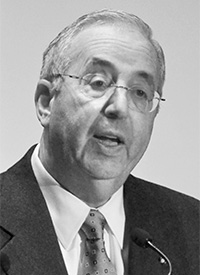
Robert D. Haas
Robert D. Haas is Chairman Emeritus and former President and Chief Executive Officer of Levi Strauss & Co. He was elected a Fellow of the American Academy of Arts and Sciences in 2011.
Introduction
We meet today to discuss the future of American public higher education and to honor one of its exemplary leaders, the chancellor of the University of California, Berkeley, Robert J. Birgeneau. The story of American public higher education is one of constancy and change; it began in 1862, when President Abraham Lincoln signed the Morrill Act, which sought to prepare a wide segment of the population for employment in an increasingly industrialized nation and to expand access to the broad liberal education that had long been the exclusive province of America’s elites. That foresighted act fueled the growth of a vast network of state-based universities that, along with their private peers, makes American higher education the worldwide standard for excellence in higher education.
Until recently, states have understood the value of having a broadly and well-educated citizenry and have generously funded public higher education. Nowhere has that been more evident than in California, with its much-envied three-tier system of university, state, and community colleges. However, the viability of publicly funded higher education in this country has been challenged in recent years by sharp cutbacks in state funding. While federal research funds and tuition aid have somewhat buffered the decline, the fact is that publicly supported institutions, which educate 75 percent of college-enrolled students in this country, are in jeopardy.
Just as the financial model that fueled public higher education is undergoing dramatic change, so, too, are the demographics of many of these institutions. The building we are meeting in is symbolic of that change. Opened in 1902 and now called the Faculty Club, for many years it was informally known as the Men’s Faculty Club, because in the early days of this campus men predominated on the faculty and women were not admitted to the members’ dining room, lounge, and recreation areas, except on special occasions. Similarly, the student body was largely white, male, and drawn from the ranks of the upper and middle income. That continued to be the case 50 years ago, when I was an undergraduate on this campus.
Currently, however, this campus, and those of many other public universities, is reflecting shifts in our culture and demographics. In my day, over 60 percent of my classmates were male, and 90 percent were white. Today, the majority of undergraduates are women, 52 percent, and roughly a third is white. While over 90 percent of my classmates came from families where both parents were born in the United States, today 71 percent of freshmen have at least one parent born outside the United States, and 27 percent come from families where neither parent has a four-year college degree. Seventy percent of the student body receives some form of financial aid, and 38 percent receives federal Pell grants, meaning that their family income is less than $45,000 a year. This campus has as many Pell grant recipients as all eight Ivy League schools combined.
Chancellor Birgeneau, in whose honor the American Academy of Arts and Sciences has convened today’s symposium, has been in the forefront of envisioning a new model that will enable American public higher education to continue to play the distinctive and viable role of providing both access and excellence to a large swath of America’s population. Moreover, as the statistics I have just cited show, Berkeley is opening the door of educational opportunity to able, hardworking students who represent the future, not the past, of our country.
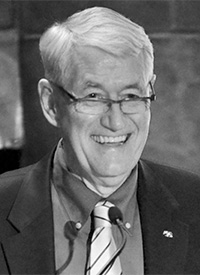
Robert J. Birgeneau
Robert J. Birgeneau is Chancellor Emeritus of the University of California, Berkeley. He also holds faculty appointments in the Departments of Physics and Materials Science and Engineering. He was elected a Fellow of the American Academy of Arts and Sciences in 1987.
Presentation
I am going to present some data that I think will help frame the discussion and define what the challenge has been and continues to be for us at the University of California, Berkeley (see Figure 1). When I started as chancellor in 2004, we received $451 million from the state and $310 million from our generous alumni, endowment earnings, and other sources of income, not including student fees and research funding. Student fees, in their entirety for the university at that time, contributed $247 million, approximately half of what we received from the state. (These figures are in real dollars, not adjusted for inflation.) Our research funding, close to $500 million, was already quite significant in 2003–2004.
When Bob Dynes, then President of the University of California, recruited me here from MIT via the presidency of the University of Toronto, he said that we were entering a terrific time at the university because he had negotiated a compact with Governor Schwarzenegger that would keep funding stable for one year, then increase it by 4 percent each year for three years, and then by 5 percent each year after that. If the compact with the governor had held, our state support in 2011–2012 would have been close to $600 million. Accordingly, I started out as chancellor imagining that we would be able to create many new programs based on a future income of $600 million from the State of California. It did not quite work out that way, to say the least!
| Figure 1 |
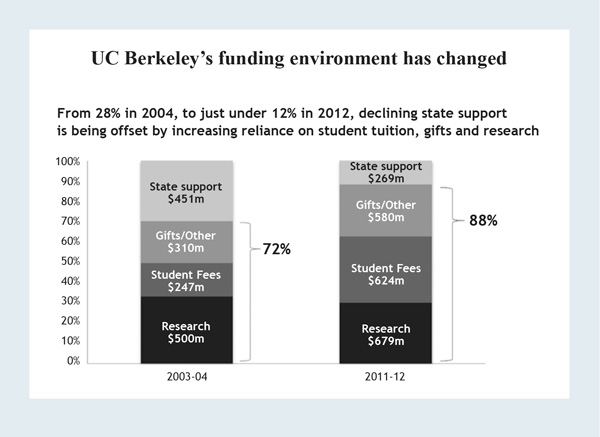 |
Instead, state support in 2011–2012 shrank to $269 million – less than half of the $600 million that the Schwarzenegger compact had promised. Actually, the current situation is worse than that because $27 million goes to support the services we receive from the Office of the President of the University of California. In addition, we lose another $6 million of our financial aid that is redirected by the President’s office to other UC campuses. Hence, the actual funding from the state that ends up on the Berkeley campus is under $240 million, a far cry from my expectations in 2004.
Gifts and other forms of income have increased remarkably – by $270 million to $580 million in 2011–2012. That is the result of a combination of a dramatic increase in philanthropy–our philanthropy has gone up by about $200 million a year – and better investment of our funds. Gifts and other income have gone from being a secondary part of our total budget to being one of the most significant contributors.
The most dramatic increase has been in the total income from student fees, which has risen from $247 million in 2003–2004 to $624 million in 2011–2012 (this includes all undergraduate and graduate fees). Our research volume has also increased dramatically, from $500 million to close to $700 million. Another $100 million is funded by the U.S. Department of Energy through the Lawrence Berkeley National Laboratory, so the total research volume on campus in fact approaches $800 million.
If you hold my kind of position in California, every once in a while your telephone rings and Jerry Brown, governor of California, is on the line. That happened today, and I had a 20-minute conversation with the governor. The good news is that he is engaged in a way no governor has been in the recent past. The bad news is he thinks that we can operate more efficiently and that some of our faculty do not teach enough. I think that I corrected some of his misunderstandings, but we will see. He also raised questions about the balance between research and teaching. Because I know the governor well personally, I said to him, “You provide us $240 million a year and our research provides us $800 million a year. If you were in charge, how would you strike the balance?” I think that he understood the conundrum that we now find ourselves in with the ever diminishing state support of public education.
We find ourselves faced with an astounding inversion in our sources of support. Public disinvestment in higher education threatens our university and every other public higher education institution in California. We here at Berkeley have been able to cope with this inversion better than most institutions have. If you are, for example, at one of the newer campuses, your research funding is limited and your income from gifts and other sources is similarly limited. Accordingly, you find yourself in a much more precarious situation than we do here at Berkeley.
What has this meant for our student body, for our undergraduates? When I began as chancellor, there were 20,500 Berkeley undergraduates who were California residents. We let that number drift up, which was a financial mistake that, among other things, led to seriously impacted classes, simply because the number of students was increasing while the funding was going down. At the peak of our enrollment of California students, only about half of our undergraduate students who were California residents were funded by the state. Consequently, we decided to decrease the number of California residents that we were admitting to our undergraduate programs and return to a more sustainable target of about 20,500 for California residents.
We also decided – first for educational reasons, then for financial reasons–to increase dramatically the number of out-of-state and international students, a trend that is now progressing rapidly (see Figure 2). In 2007–2008, 8 percent of our students were out-of-state or international. Today 17 percent are, and we expect that in 2013–2014 this percentage will approach 20 percent. Twenty percent is our current target, but that figure is not written in law or in stone. My successor and the community (the faculty, etc.) will have to decide whether 20 percent is the appropriate asymptote for the number of out-of-state and international undergraduate students or, if there is further disinvestment by the state, should that percentage go higher.
| Figure 2 |
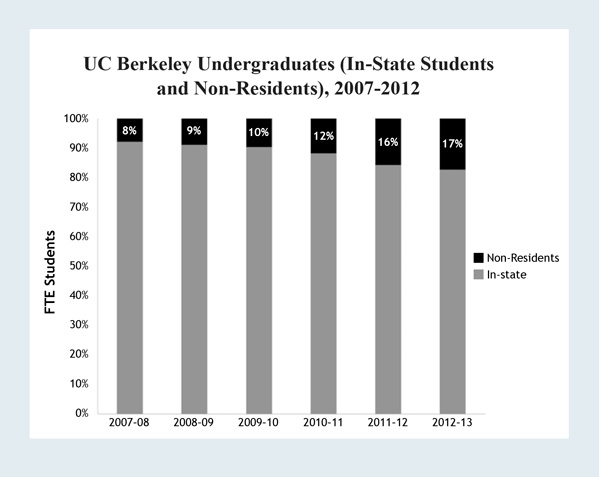 |
What about income distribution? With state funding being decimated and student fees more than doubling, one might think that this would have led to a hollowing-out of low-income students. In fact, this has not happened at all. Here we do have to give credit to the state government for maintaining the Cal Grant program, which provides significant financial aid to students from low-income families. As student fees have gone up, the state funding for Cal Grants has increased proportionally. As a result, we have been able to create a financial aid system throughout the entire University of California that guarantees that no California resident student whose family income is under $80,000, and who is eligible for financial aid, pays any tuition at all.
Interpreting data concerning the family income distribution of our students is complicated, because historically there are significant variations in the number of students actually reporting family income. Nevertheless, if we look at our lowest income students alone, namely, those with a family income of $0 to $40,000, we see that the number of low-income students has stayed nearly constant since 2000 (see Figure 3). This is a miracle, one of which we are extremely proud.
| Figure 3 |
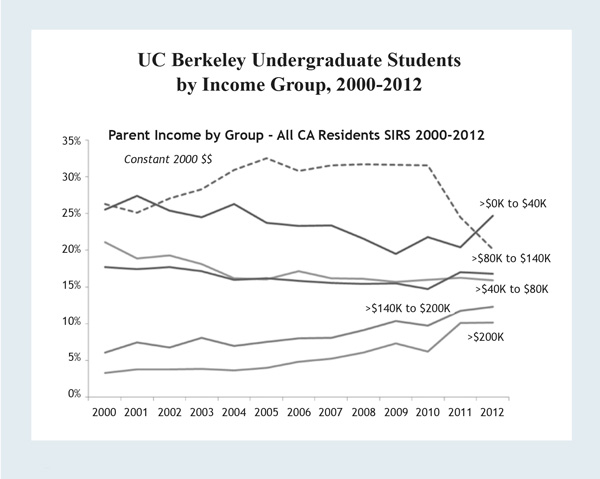 |
In the next cohort group, those with family incomes of $40,000 to $80,000, the number of undergraduate students has gone down slightly, by only a few percentage points. Among the cohort of students from really privileged families, those whose family income is above $200,000, the number of undergraduate students has risen gradually from 5 percent of our student body to about 8 percent. However, we do not know how much of that increase comes from the increasing number of people reporting their family income.
So, despite the state’s disinvestment, the character of the student body has not changed at Berkeley over this past decade. A large percentage of our student body is made up of extraordinarily talented students from low-income families. This defines our university as a public university better than any other statistic that I might cite. I once heard Berkeley described as “Harvard for the masses”; that may well be true, and we are very proud of it. Ten percent of our students come from affluent families, and if you set the threshold at a family income above $140,000, that figure jumps to 22 percent. We have a robust percentage from the middle class, and 45 percent of our students come from families whose incomes are sufficiently low that their students pay zero tuition, making a Berkeley education free for them. I think that is an astounding accomplishment.
What about the ethnic composition of our student body? The data have been relatively constant over the last decade and a half, in spite of almost heroic efforts by our admissions staff and by staff in student affairs to increase significantly the number of underrepresented minorities. In general, our undergraduate student body is quite diverse in terms of gender, religion, race, sexual preference, and economics, but much work still remains to be done.
One characteristic that differentiates schools in California from those in the rest of the country is that our state has no majority population. The one group that has increased significantly in our student body is the Chicano-Latino population, which has gone from just over 10 percent to 15 percent of our student body and is rising gradually, reflecting the progressive increase in the number of Chicano-Latino young people in the state of California.
| Figure 4 |
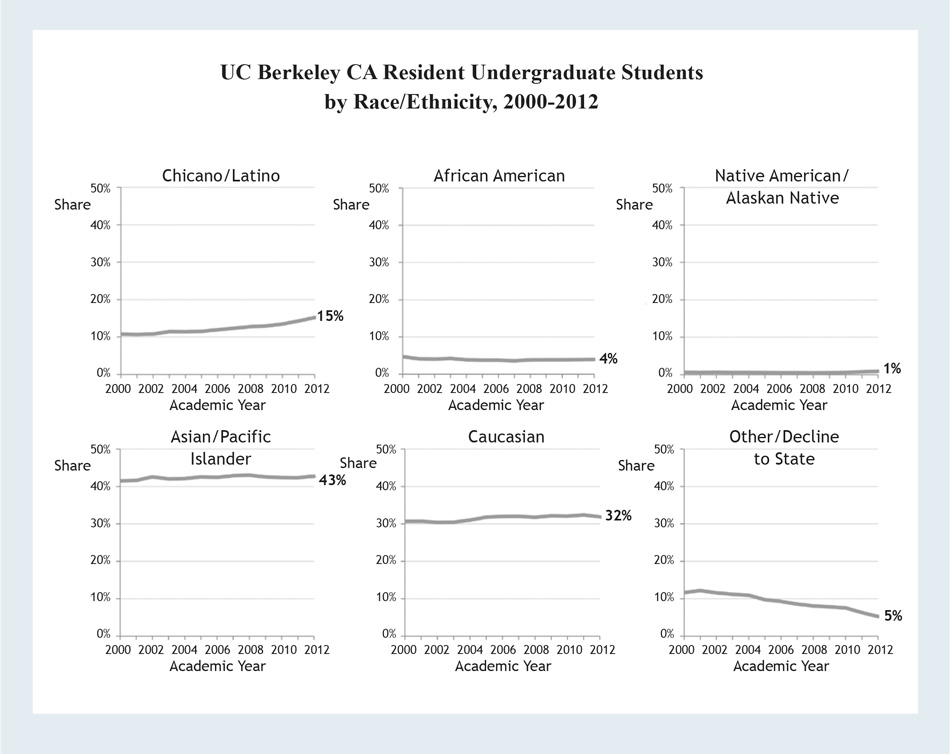 |
Asians have been constant at 43 percent, Caucasians, on average, at 31 percent. The Native American and African American populations have also been constant. For “other/decline to state” groups, the number has dropped by a factor of two, from 11 percent to 5 percent (see Figure 4). So, in spite of everything that has happened over this past decade, the ethnic distribution in our undergraduate body has essentially remained constant. This is a really interesting phenomenon, one that we need to understand better.
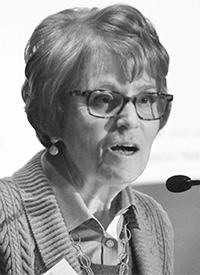
Mary Sue Coleman
Mary Sue Coleman is President of the University of Michigan, and she also holds appointments as Professor of Biological Chemistry in the Medical School and Professor of Chemistry in the College of Literature, Science, and the Arts. She was elected a Fellow of the American Academy of Arts and Sciences in 2001.
Presentation
A year ago this month, Barack Obama came to our Michigan campus to discuss the issue that is front and center for university presidents and for him: the cost of a college education. We were nervous when he told us he was going to visit, because I could see another beating-up of universities for charging too much: “You have to get your costs under control.”
So we spent a lot of time, in the few days before he came, with the Domestic Policy Council–many of whom are UM alums–telling them about the complicated way in which university finances are based. The point is, the old compact is broken. We need a new understanding and new partnerships, because it is important that these great universities remain in the future.
We all know that American higher education is unparalleled. Students from around the globe want to come here. We have many more students who want to come to Michigan than we can possibly accept. The same is true at Berkeley. The consumers of what we offer know that there is great value in coming here. But we have an obligation to deliver quality and affordability. We understand that.
In my first year at Michigan in 2002, state support was $359 million. Last year it was $268 million. But we don’t have Cal Grants. In fact, we now have no state support for scholarships. And, if you factor in inflation, funding from the state now equals our appropriation in 1964, when Lyndon Johnson was president and Barack Obama was a toddler.
We are in crisis. I don’t use that word often or lightly, but when one of our national assets is under threat, it is a true crisis.
I believe solutions exist, but they require thinking and action from all of us. First, I have not given up on state governments. We need to make the case to state governments so that they can give more support to universities. Today in Michigan, as in California, we spend $2 billion a year on incarceration. We spend $1.3 billion on higher education. And that is a pretty sad statistic.
I also believe that the business community needs to deepen its support, because we need other people telling our story, explaining why higher education is a good investment for the public. I am very fortunate in Michigan, where the state’s business leaders have finally begun to see the problem. They need college graduates for their companies to prosper, so they are beginning to see higher education as being an interest of theirs.
The economic landscape in Michigan is changing dramatically, much more than in California. We have gone, in the last decades, from union jobs in the auto industry that paid well and required only a high school diploma, to technology-oriented positions that demand at least an associate’s degree, if not more. Business leaders in Michigan have estimated that in seven years our state will need 900,000 workers with more than a high school diploma. Today only about 25 percent of Michigan’s citizens have bachelor’s degrees. This is well below the national average, so we are not prepared for the future. As a consequence, state CEOs are pushing the state to restore a billion dollars to higher education funding over the next decade. If done over a decade, the strain on the state is not large and would get us back, at least partly, to where we were before. We cannot afford an uneducated workforce, but we will have one if the state does not reinvest.
As public universities, we have to look more to private support. Philanthropy has always been a cornerstone of private universities, but only recently have the publics begun to follow suit. We need to be frank with our students about this. When my son started at Williams–this was many years ago–my husband and I went to a convocation at which the president of the college talked about the students’ obligation to give back, and to give back every year, because they were so privileged to be there. We don’t do that as much as we should at the Michigans and the Berkeleys of the world, but I think we have to. And it works, as you have found at Berkeley.
When I challenged Michigan alumni to fund need-based scholarships in our last campaign for undergraduates, they responded with another $70 million on top of the $540 million they had already given to support students in our capital campaign. At the same time, though, we have to continue to build financial support in the next capital campaign.
We can guarantee, for in-state families, that if their son or daughter can get into Michigan, we will put a financial aid package together to make it possible to attend. We cannot make the same guarantee for out-of-state students, and now 40 percent of our entering class is from out-of-state. We have gone further than Berkeley here, but for a long time we have had more out-of-state students than Berkeley. This may in part be because of a decline in Michigan’s demographics. The number of high school seniors is dropping dramatically in the state.
Finally, universities have an obligation to cut costs. At Michigan, for the last decade, we have had a heavy focus on cutting costs. Since 2003, we have cut our general-fund cost by $235 million. This represents an almost 15 percent cut in ongoing expenses. We are now working to identify another $120 million in savings by 2017 so that this work will go on forever.
In the last decade, our tuition increase has averaged just a little more than 5 percent a year, while state support has declined by more than 50 percent. Our actual cost to educate students has increased by only 2.3 percent, which is less than the CPI, primarily because we have been so effective in cutting costs. However, we have not been able to make up that whole gap created by loss of state support in cutting cost. We have had to increase tuition to offset the dramatic cut in state support, and to provide more need-based financial aid.
This is hard, painful work. But it is something we have to do, and it is a continuing challenge to our campus community. But we are committed to providing an affordable education, because all of us benefit from an educated citizenry. Last month, at our December commencement we said goodbye to the last class of 2012, which arrived on campus just weeks before the collapse of Lehman Brothers. From a financial perspective, those four years were discouraging. But I find that young people are an optimistic lot. We know from research that Michigan students want to give back to society. They are particularly committed to building a sustainable world, improving schools, and stabilizing the economy. They leave college with a strong appreciation for diversity and all of its benefits, which will serve them well as they take on many paths in life.
The great public universities of this country have been doing this kind of work for a long time. We educate young people, we build leaders, and we contribute to the state and to the nation. In 2017, we will have the opportunity to reflect on Michigan’s legacy as we celebrate our bicentennial. We have done much to shape public higher education in this country, and we are going to use our bicentennial celebration to reflect on our institution’s impact and to explore ways we can shape society in our third century. This is a conversation that the country needs to have, and I am so grateful that the American Academy is engaging in The Lincoln Project to advance a national conversation about public higher education and the important role public colleges and universities play for our future and for the country as a whole.
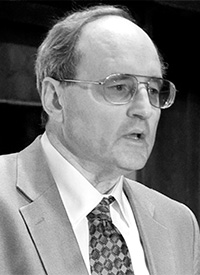
Henry E. Brady
Henry E. Brady is Dean of the Goldman School of Public Policy and Class of 1941 Monroe Deutsch Professor of Political Science and Public Policy at the University of California, Berkeley. He was elected a Fellow of the American Academy of Arts and Sciences in 2003.
Presentation
Accessible public higher education provides equal opportunity and gives people a chance to make the best of themselves. Somewhat surprisingly, that turns out to be important from the perspective of economic efficiency. Denying a lot of very bright, hardworking young people the chance to go to the very best university they can attend is, as the United Negro College Fund (now UNCF) has said, a terrible waste of bright young minds. So making it possible for people of all socio-economic and demographic backgrounds to come to the University of California, Berkeley–people who are eager to learn, who want to work hard, who have intelligence, and who merit coming to Berkeley–increases economic efficiency and produces more economic development and more growth. The UC system helps build a stronger State of California and a stronger nation.
Equal opportunity is not just a nice thing. As well as being a basic American value, it is also just good common business sense to put money into higher education. Chancellor Birgeneau has been a leader in showing how important this investment is, and he has also always been optimistic about the future of Berkeley and higher education because he ardently believes that California and America will not turn its back on education. He has the same kind of optimism and confidence about the future that FDR showed during the Great Depression and World War II. With Bob at the helm, you always have the sense that we are going to make it through, that we are going to find a way, and that things will get better. We are going to solve our problems. The truth is, we have already solved some of them, and we are in a much better place than we were four years ago, when disaster struck the American economy, state budgets, and the University of California.
But is public higher education worth preserving? What are the benefits of public investment in higher education? Some people say, “Why don’t we just privatize everything? Education is a private good. Individuals get benefits from it. Let them pay the cost, and let them get the education they can afford to have.” Is this a wise idea?
Let us start at the beginning by asking about the value of higher education. Is it really worthwhile for anybody? A lot of evidence shows that where there are higher educational institutions, there is higher economic growth, greater productivity, more creativity, more innovation. An overwhelming body of economic research shows that one of the most important things you can invest in is education and higher education. Without question, education and higher education are important. And investment in higher education does not mean redistribution from one area of a country to the area where the higher educational institution is located. The growth rate of the entire economy increases through investment in higher education.
How does higher education do this? Well, through the same processes on which we evaluate our faculty: through research, service, and teaching.
Many studies show that R&D is fundamentally important for the economic health of the American economy and that, if anything, we are underinvesting in R&D in America right now, both in the private and public sectors. We need to invest more.
The services provided by a university such as the University of California or the University of Michigan are also important for the areas in which they are situated. Universities provide services to state governments and nonprofits. They help businesses, and they help the arts. And although we don’t have as much data as I would like to see in this area, I am convinced that public universities do all sorts of things that make the places in which they are located better places to live and work.
Universities also invest in human capital. We teach. We take people, give them knowledge, and make them more able to get good jobs while increasing the productivity and economic growth of a society. In some sense, this argument for higher education is the hardest one to make, because at least some people will say, with some justification, that “Oh, well, that’s a private good. Individuals just benefit from that. They should pay for it themselves.”
Higher education is certainly worthwhile to individual students. In a study I did about the payoff of California higher education systems with Michael Hout and Jon Stiles, we found that Californians with a college degree will earn $1.3 million more and will spend less time in poverty over their lifetimes than their peers with only a high school diploma. More education provides for more earnings and higher total income (see Figure 1).
| Figure 1 |
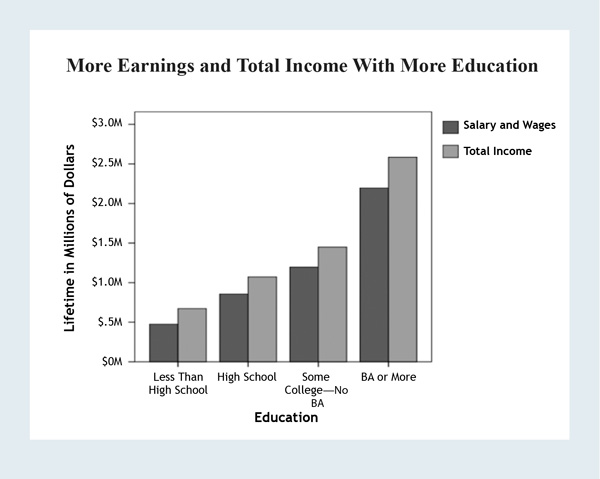 |
Furthermore, we found that this outcome is not simply because the people who go to college have high ability and therefore would have done well no matter what. It turns out there is a value added to higher education. We actually teach people something; we do something useful. Not only is there a substantial payoff to higher education, the gap in lifetime earnings between those who complete college and those who do not go to college has been increasing (see Figure 2). Income for individuals with less than a high school degree has been declining over time relative to high school graduates, and lifetime earnings for those with college degrees have been increasing relative to high school graduates. This is true for all ethnic groups. The benefit of getting a college degree is real, and that benefit has been increasing over time.
| Figure 2 |
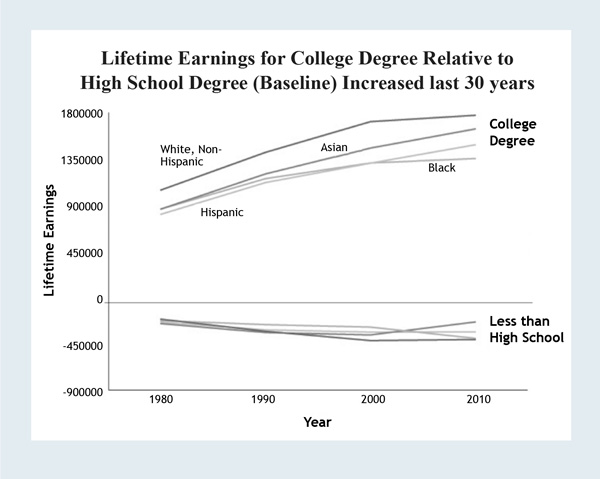 |
Next we looked at the benefits of higher education to the state. The state wins in two ways when people go to college: (1) it gets more in taxes because people earn more money; and (2) the state has lower expenditures because fewer people commit crimes or need cash aid. We found that the number of years a person is in poverty, unemployed, on cash aid, or in prison decreases dramatically as he or she gets more education (see Figure 3). That is good for the state.
| Figure 3 |
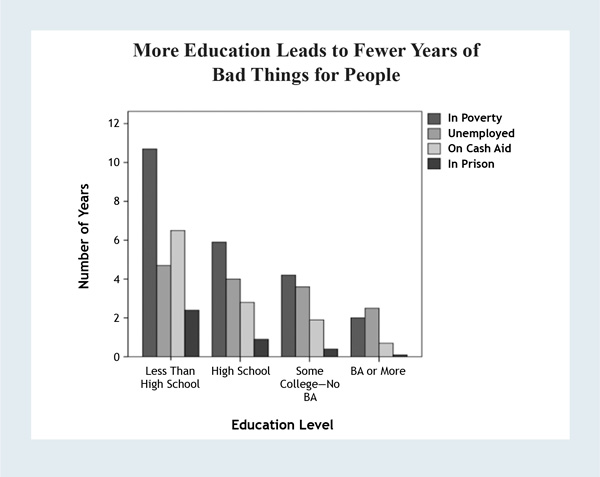 |
For college completers, for every dollar the state invests in higher education, it gets $4.80 back. Higher education is an incredible investment for the State of California, one the state should engage in to a greater degree. The investment not only benefits individual students, but it provides public goods in the form of safer streets, less welfare, and a healthier population.
Research also shows that people who have gone to college are more tolerant, are better citizens, and are more engaged. They know more about the world. They are even happier. There are lots of reasons for people to go to college, making higher education a mixed private and public good.
In addition, higher education, when properly constructed, can be an engine of upward mobility. We should not tell people whose parents did not go to college or those who do not have much money that they cannot go to college. We should say, “If you performed well in high school, and if you look like you have what it takes, you can come to Berkeley.” My father was a carpet salesman. He did not go to college. My mother was enrolled in college for one year. Going to college is the reason I am here today. I am proud to be part of a university that allows people to have that same opportunity.
“But,” some might ask, “is public investment actually needed? Maybe the public should not be getting involved here because private individuals could still make the right choices.” Actually, we have lots of reasons to believe they won’t. First, funding higher education has benefits that go beyond what the individual can get for him- or herself, so people will under-invest in education if left to a purely personal decision. Second, people without much wealth may not want to make the risky investment of going to college, which is expensive with uncertain payoffs. So we need some way to give people that opportunity without asking them to make risky decisions that they might find too daunting. Some people argue that this can be done through better private sector loan markets, but because of the risk that is involved and the peculiarities of human capital, standard capital markets are an imperfect mechanism for matching people with the loans they need to attend college. One of the major problems is that of collateral–unlike most loans in which the assets produced by the loan serve as partial collateral, we cannot ask people to make their human capital collateral for their loan because it would require some form of indentured servitude for those who do not pay off their loans. That is why we have federal government loan programs.
Finally, teenagers do not always make the right choices about going to college. We may want to make it easier and cheaper for them to go to college, because that way they will be more likely to make the right choices when education is subsidized. When my twin brother was about 20 years old, he decided the important thing for him to do was to work at Douglas Aircraft in Long Beach, make a lot of money, and buy a Chevrolet Camaro 396, which provided immediate gratifications, unlike investing in college. The car was red; it was beautiful. He let me drive it once in a while, and I loved that car. But it wasn’t really a good use of his resources, and it wasn’t a good decision on his part. In the end, he graduated from Cal State Long Beach, served in the Peace Corps, and went on to be a star high school teacher in Southern California. He has been a great contributor to society, but he had a little detour there with the Camaro. A lot of students do, some of whom do not find their way back.
So public investment may be needed, but why fund higher education institutions directly? Maybe we just need Pell grants. Maybe we just need Cal Grants. Maybe we should subsidize individuals directly and let them make the decisions. Some economists think this is the right choice. I think it is wrong because it does not solve some important problems. First, it is not clear that the private sector can provide enough high quality higher education. One of the great things that happened in California is that the California State University and University of California systems have increased the overall supply of higher education in California beyond what the private sector would have provided. Second, it is also not clear whether the private sector can match the quality of education provided by the UC and CSU systems, and whether it would have the same public mission and commitment to equal opportunity.
Finally, believe it or not, economic research suggests that the elite private nonprofit higher education sector is often less efficient at delivering higher education than the public sector. This is not what they believe on Wall Street or in the pages of the Wall Street Journal. But a lot of evidence suggests it is true. Why? In part it is because public universities face very tough budget constraints. Public universities cannot simply say, “Oh, let’s just use a little more of the endowment for a while to smooth out what we are doing.” They can’t raise another billion dollars in contributions. Because it is much harder for public universities to do these things and because they face periodic budget cuts and public scrutiny, public sector institutions of higher education are often much more efficient than those in the elite private, nonprofit sector – a miracle of miracles and another strong argument in favor of public investment in institutions of higher education like UC Berkeley and the University of Michigan.
© 2013 by Robert D. Haas, Robert J. Birgeneau, Mary Sue Coleman, and Henry E. Brady, respectively
To view or listen to the presentations, visit https://www.amacad.org/content.aspx?d=1283.